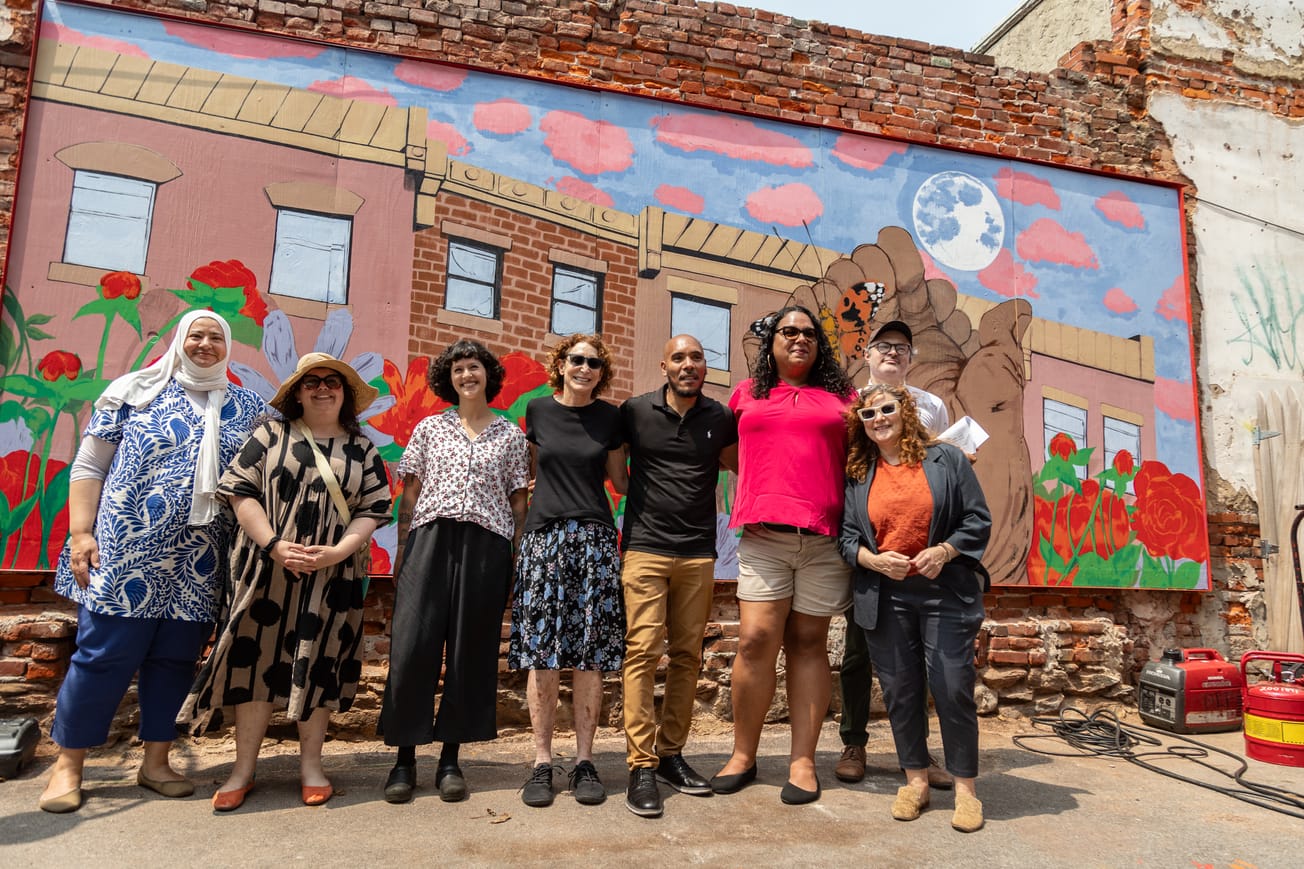While Kensington and the City of Philadelphia as a whole face unique barriers to making sure all residents have quality housing, the issue is not exclusive to the city. Here’s a look at how other places are working to reduce the number of people experiencing homelessness in their communities.
Well House (Grand Rapids, Michigan)
Well House, a non-profit based in Grand Rapids, Michigan, purchases abandoned buildings and involves the community in rehabilitating them into affordable, long-term homes for people without housing. Since Well House began restoring buildings in 1977, they have converted 13 houses into safe living spaces and housed approximately 5,000 people.
Residents can rent a private room in a Well House property for an indefinite amount of time. Rent ranges from $300 a month for individuals to $400 a month for two people. The amount tenants pay includes utilities, food grown on the property, and access to staff who can connect them to other services.
John Glover, the executive director of Well House, said that each property acquisition is a different experience that involves negotiating with land banks and working with the private sector, foundations, and community organizations.
“It’s very much a community effort, primarily by foundations and corporations, with a lot of sweat equity of the volunteers and a very small staff,” Glover said.
Well House is funded through a combination of grants, donations, fundraising, tenant rent, and farm income.
According to Glover, providing long-term housing as opposed to a temporary shelter addresses the needs of those who live on the margins. While Glover said that many shelters offer a wealth of services and do exceptional work, he also saw how complex those environments could be for those living there.
“Even if they find resources to get a low-income apartment, often they’re discriminated against,” Glover said. “Landlords don’t want to risk someone with those kinds of problems coming into their buildings because they don’t have the work history, or they were evicted from a previous place.”
Instead of rejecting potential tenants because of their past or present struggles, Well House welcomes them to be part of the community. All that matter is that tenants pay rent and are respectful to their housemates and the Well House staff.
Glover said that rehabbing the buildings is the most challenging part of the process. Despite the hurdles, preserving community history and assets is part of the Well House philosophy. The renovation process also brings together community members, residents and often times those who will be living in the houses. This model, Glover believes, is transferable and can work in any city as long as people are dedicated to making it happen.
“It’s very gritty,” he said. “There’s quite a lot of sweat equity and a lot of passion, but it can actually solve the problem.”
A Tiny Home for Good (Syracuse, NY)
For eight years, Andrew Lunetta worked in shelters, where he recognized an immediate need for affordable long-term housing options.
According to Lunetta, when people moved from a shelter into the apartments on the private market that they could afford, the units were often infested with vermin or otherwise not in livable condition. As a result, the tenants would often cycle in and out of the sheltering system for years, or even decades. He decided to take action by raising the money to build tiny homes that could serve as long-term housing for those experiencing chronic homelessness.
While Philadelphia is considering a model that uses tiny homes as temporary, emergency shelter, A Tiny Home For Good provides residents with stable, long-term homes.
Initially, A Tiny Home For Good tried to acquire vacant land owned by the city, but city officials said that Lunetta needed to inform the surrounding residents of his plans. During this process, the project received massive pushback from neighbors.
“No one was sure what the houses were going to look like,” said Lunetta. “They were concerned they would be more like a shelter.”
Eventually, he decided to purchase vacant land from a private landlord instead. After the first tiny homes were established, Lunetta has found that communities are much more open to the idea.
One reason the homes are successful is that they blend into neighborhoods, Lunetta said. The organization scatters the homes in vacant lots across the city instead of concentrating them in one location. Lunetta explained that this helps mend the disconnect that some residents have with those who have experienced homelessness.
“They’re just tiny homes in the neighborhood,” said Lunetta. “No longer are people saying, ‘That’s where the homeless people live.’”
A Tiny Home For Good is made possible by donated lots and volunteer effort. The project also benefits from the fact that Syracuse has low taxes and a low cost to build.
Lunetta realizes that in larger cities like Philadelphia, higher costs could be a major challenge. However, he stressed that having landlords who aren’t for-profit — but who instead have a mission of housing people through grants and public funding — can make a serious dent in chronic homelessness.
“If it was done by someone who really cares about the people living there, the number [of people experiencing homelessness] could go down a lot faster,” he said.
Boston Way Home Fund (Boston, MA)
In 2016, the City of Boston established the Boston Way Home Fund with the goal of raising over $10 million in private and public funds in four years to create 200 units of permanent housing for people without homes. Since then, the program has housed 1,400 people, most of whom are veterans or people who have experienced chronic homelessness.
The implementation of the fund also led to the city revising and streamlining its system of providing services to those experiencing homelessness. Pine Street Inn, a nonprofit partner of the fund, focuses on getting people out of the shelter and into appropriate housing as quickly as possible. This includes moving people into permanent supportive housing, rapid re-housing, and providing rent assistance or housing vouchers.
Those working with individuals in the shelter have seen that many people come in as they’re transitioning out of health care systems or the criminal justice system. Others need help connecting to long term forms of care. As the fund’s partners determine the needs of those experiencing homelessness, the city will continue to push to raise money to create housing solutions based on those needs.
What did you think about this story? Send a note to editors@kensingtonvoice.com, and we’ll consider publishing it in our Voices section. You can also tell us what you think in person at our neighborhood events.
Editors: Jillian Bauer-Reese / Story Designer: Jillian Bauer-Reese / Translator: Angela Gervasi





